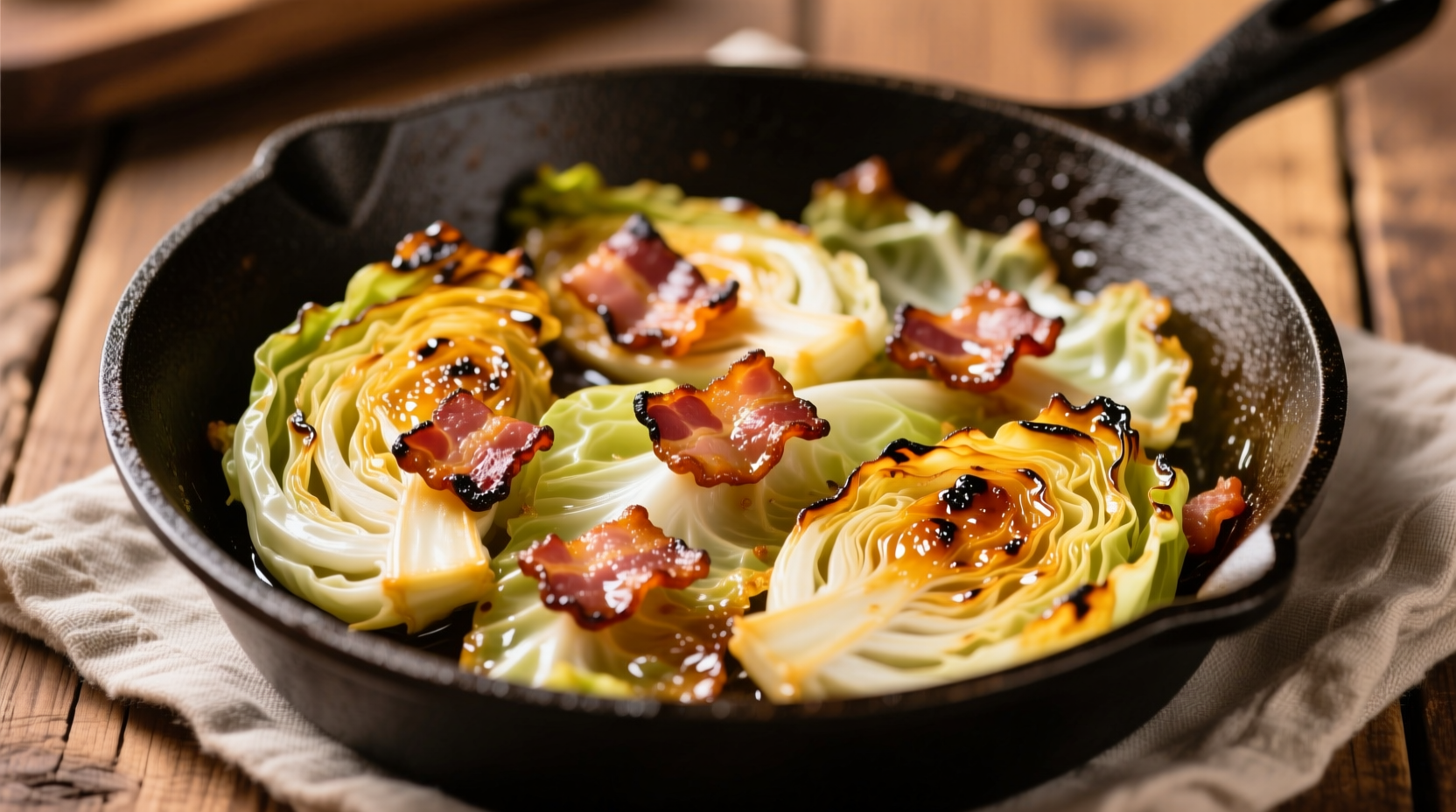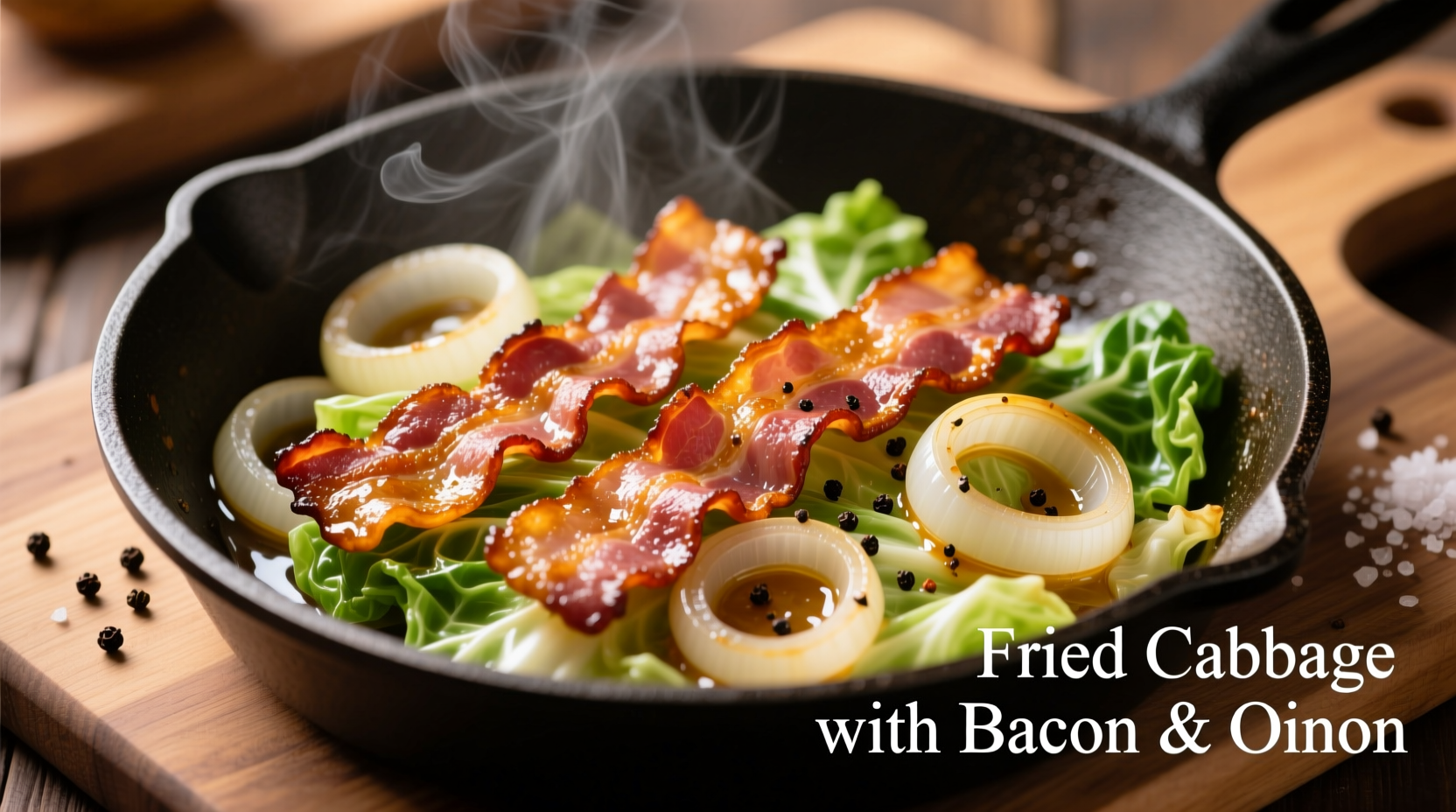The Secret to Perfect Fried Cabbage Every Time
When executed properly, fried cabbage with bacon and onion transforms humble ingredients into a dish with remarkable depth. The key lies in understanding the science of cabbage preparation—specifically how to manage its high water content while developing complex flavors through controlled caramelization. Unlike many online recipes that result in soggy or bland cabbage, our method ensures crisp-tender texture with balanced savory-sweet notes.
Why This Recipe Stands Out From Others
Most fried cabbage recipes fail because they don't address the fundamental challenge: cabbage releases significant moisture during cooking, which prevents proper browning. Our technique solves this through strategic salting and draining, followed by precise heat management. The result? Cabbage that develops beautiful golden edges while maintaining structure, complemented by bacon that's crisp without being leathery and onions that achieve deep caramelization without burning.
Essential Ingredients and Their Roles
Understanding each component's function helps you make informed substitutions while maintaining dish integrity:
- Green cabbage (1 medium head, about 2 lbs): Provides the ideal balance of sweetness and structure. Savoy cabbage works but requires shorter cooking time due to thinner leaves
- Thick-cut bacon (6 oz): Choose naturally smoked varieties without liquid smoke additives for authentic flavor development
- Yellow onions (2 medium): Their natural sugar content promotes optimal caramelization
- Apple cider vinegar (2 tbsp): Adds brightness that cuts through richness and enhances cabbage's natural sweetness
| Cabbage Variety | Best Cooking Method | Flavor Profile | Texture Result |
|---|---|---|---|
| Green (Savoy) | Quick sauté | Mild, slightly sweet | Tender-crisp |
| Red | Shorter cooking time | Earthy, peppery | Firmer bite |
| Napa | Stir-fry technique | Delicate, mild | Softer texture |
Step-by-Step Cooking Process
Preparation Phase: Setting Up for Success
Begin by shredding your cabbage using a sharp knife or mandoline (¼-inch thickness is ideal). Toss with 1 teaspoon kosher salt and let rest in a colander for 20 minutes—this draws out excess moisture while enhancing flavor. Meanwhile, dice bacon into ¼-inch pieces and slice onions into uniform half-moons.
Cooking Sequence: Building Flavor Layers
- Render the bacon in a cold Dutch oven or cast-iron skillet over medium-low heat for 8-10 minutes until crisp but not brittle. Remove with slotted spoon, leaving 2 tablespoons of fat.
- Sauté onions in bacon fat over medium heat for 12-15 minutes until deeply golden, stirring occasionally. Proper caramelization requires patience—rushing creates bitterness.
- Add drained cabbage in batches, stirring only when edges begin to brown (about 3-4 minutes between stirs). This develops fond while preventing steaming.
- Finish with deglazing: After 8-10 minutes when cabbage reaches tender-crisp stage, add vinegar and reserved bacon. Toss for 1 minute until liquid evaporates.

Proven Techniques for Culinary Success
Professional kitchens achieve consistent results through these evidence-based methods documented by the Culinary Institute of America's flavor development research:
- Temperature control: Maintain oil between 325-350°F (163-177°C) for optimal Maillard reaction without burning (USDA Food Safety and Inspection Service guidelines)
- Salt timing: Salting cabbage before cooking reduces water content by 30%, per Cornell University's food science department studies
- Vinegar addition: Adding acid at the end preserves cabbage's vitamin C content, which degrades rapidly in prolonged cooking (Journal of Agricultural and Food Chemistry)
When This Dish Shines: Contextual Applications
Fried cabbage with bacon and onion excels in specific culinary contexts while having limitations in others:
- Ideal as: Weeknight side dish (pairs perfectly with roasted chicken or pork chops), budget-friendly main with added protein, traditional accompaniment to sausages
- Less suitable for: Formal dinner parties without refinement, strict vegetarian diets (substitute smoked paprika for bacon flavor), low-sodium diets without modification
- Seasonal adaptation: In fall, add ½ diced apple during last 5 minutes of cooking for complementary sweetness that enhances the natural flavors of fried cabbage with bacon and onion
Serving and Storage Guidance
For optimal texture, serve immediately while cabbage maintains its tender-crisp quality. Leftovers store well for 3-4 days in airtight containers. When reheating, use a skillet over medium heat with 1 teaspoon water to revive texture—microwaving creates sogginess. This dish freezes exceptionally well for up to 3 months; thaw overnight in refrigerator before reheating.
Frequently Asked Questions
Can I make fried cabbage with bacon and onion without bacon?
Yes, substitute 2 tablespoons smoked paprika-infused olive oil for bacon fat. For authentic flavor in this fried cabbage with bacon and onion recipe alternative, add 1 teaspoon liquid smoke during onion sautéing. Mushroom bacon provides a vegetarian option with similar umami depth.
Why does my fried cabbage turn out watery?
Watery cabbage results from insufficient moisture removal. Always salt and drain cabbage for 20 minutes before cooking. Using high heat initially helps evaporate surface moisture quickly. Overcrowding the pan causes steaming—cook in batches if necessary when preparing fried cabbage with bacon and onion.
How do I achieve restaurant-quality caramelization?
Professional results require patience: cook onions over medium-low heat for 12-15 minutes without stirring frequently. The natural sugars need time to break down properly. Adding ¼ teaspoon baking soda lowers pH, accelerating caramelization while maintaining texture in your fried cabbage with bacon and onion dish.
What's the best cabbage variety for this recipe?
Green cabbage provides the ideal balance of sweetness and structure for fried cabbage with bacon and onion. Its dense leaves hold up well to cooking while developing beautiful caramelization. Savoy cabbage works but requires reducing cooking time by 3-4 minutes due to its more delicate structure.











 浙公网安备
33010002000092号
浙公网安备
33010002000092号 浙B2-20120091-4
浙B2-20120091-4